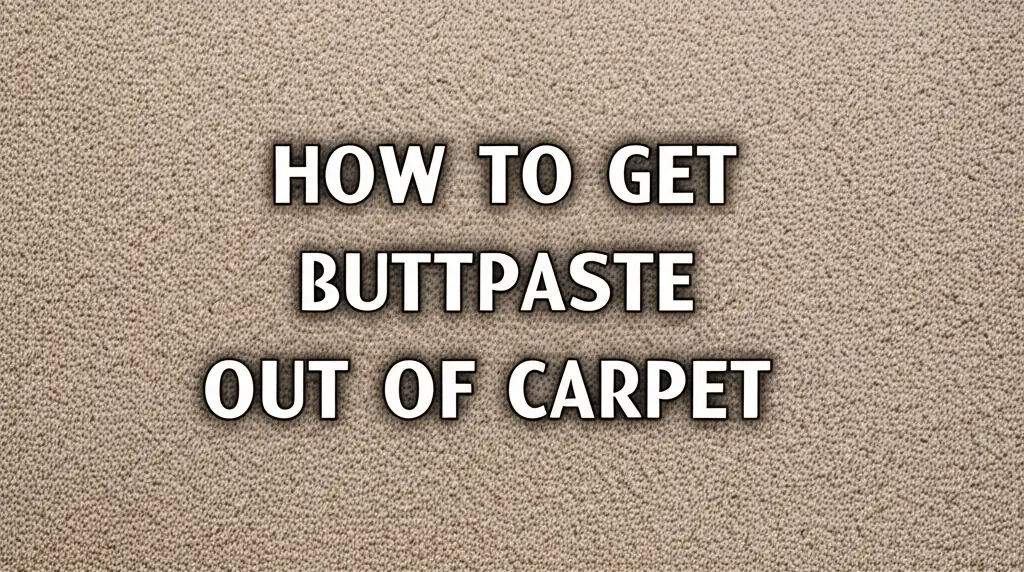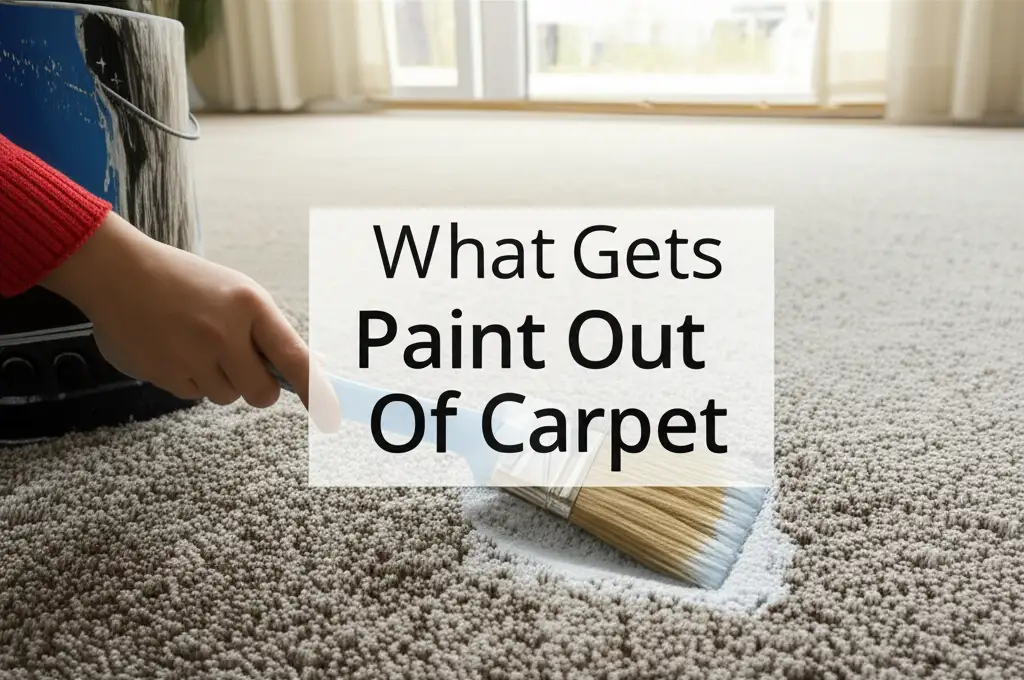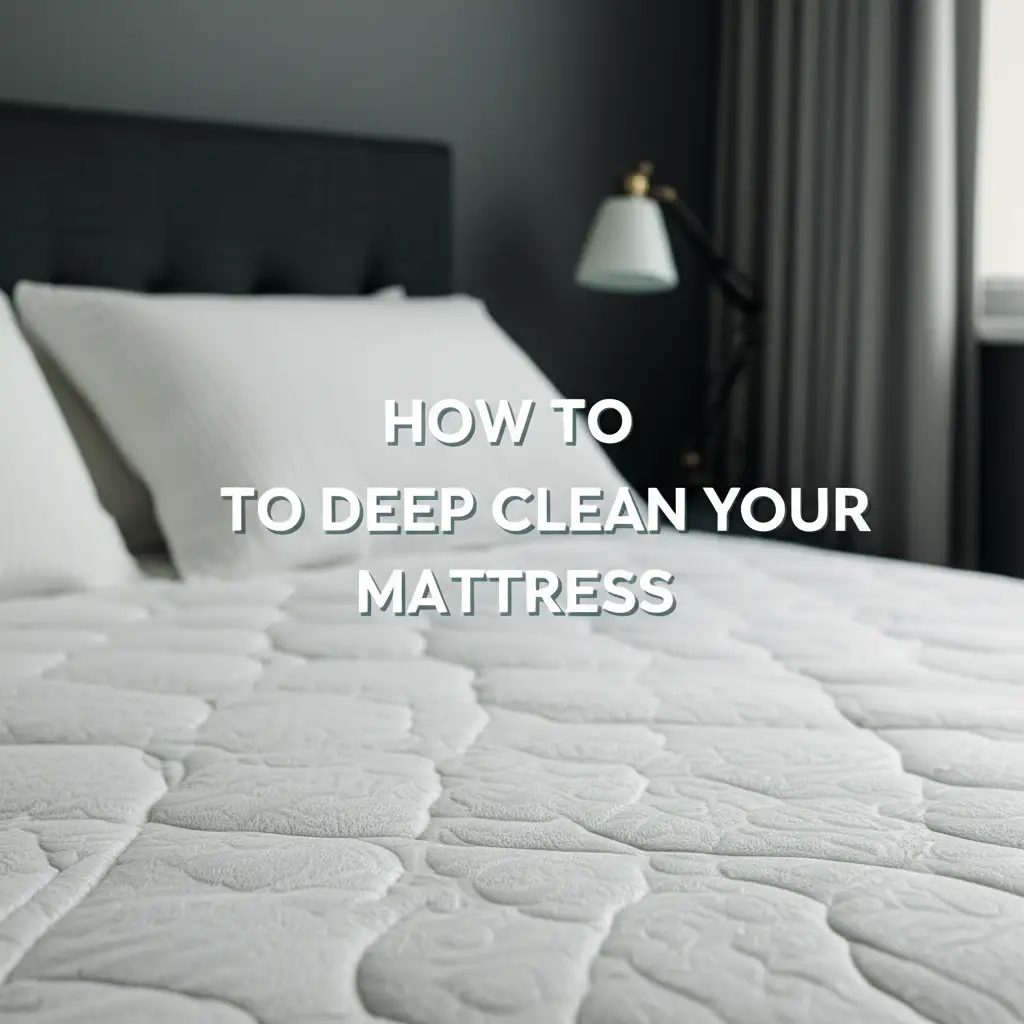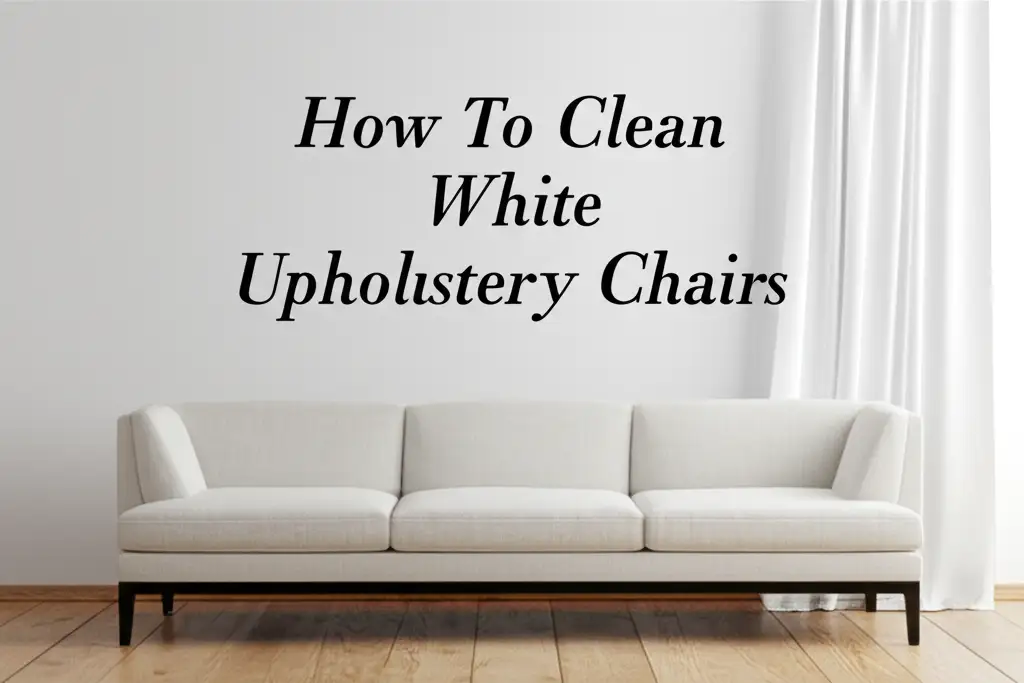· Elira Thomsen · Home Care & Cleaning · 20 min read
How To Get Gentian Violet Out Of Carpet
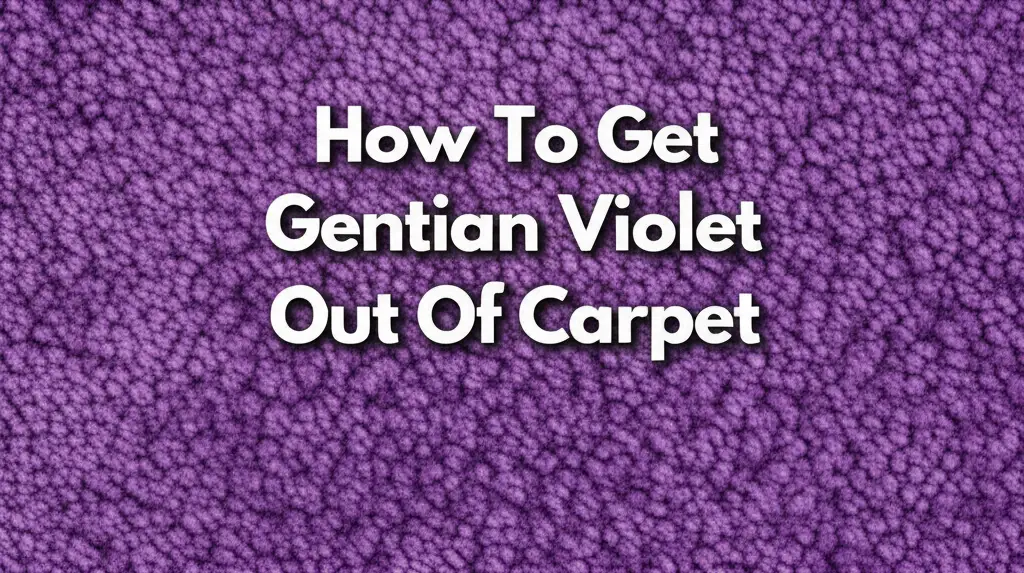
How To Get Gentian Violet Out Of Carpet Stains Easily
Spilling gentian violet on your carpet can feel like a major disaster. This vibrant purple dye, often used as an antiseptic, leaves a notorious, hard-to-remove mark. Many people wonder how to get gentian violet out of carpet without ruining the fibers. You might feel frustrated and believe the stain is permanent. But do not lose hope! I have faced similar situations, and I know effective methods exist.
This article provides a comprehensive guide to tackling these stubborn purple stains. We will cover immediate actions, effective home remedies, and advanced cleaning techniques. You will also learn when professional help is the best option. I will share tips on dealing with different carpet types and preventing future spills. Let us get your carpet looking fresh again!
Takeaway:
- Act fast to absorb fresh gentian violet spills immediately.
- Pre-test all cleaning solutions on an inconspicuous area first.
- Blot, do not rub, the stain to avoid spreading it.
- Combine different cleaning agents for the most stubborn stains.
- Consider professional help for large or persistent gentian violet stains.
Quick Answer:
To effectively remove gentian violet from carpet, act quickly by blotting the stain, not rubbing. Use a solution of dish soap and water, then follow with rubbing alcohol or hydrogen peroxide, blotting carefully. Rinse the area thoroughly with water and allow it to dry completely. Repeat the process as needed.
Understanding Gentian Violet Stains on Carpet
Gentian violet is a strong dye known for its deep purple color. It is a triphenylmethane dye. This dye easily penetrates porous materials like carpet fibers. The color comes from its chemical structure, which bonds strongly with many surfaces. This strong bonding makes gentian violet stains especially tough to remove from fabrics.
The dye is water-soluble. However, it stains through a process called adsorption. This means the dye molecules stick to the surface of the carpet fibers. Different carpet materials react differently to this dye. Synthetic fibers might hold the dye less tightly than natural fibers like wool. Knowing this helps you choose the right cleaning method. The goal is to break the bond between the dye and the fiber.
Gentian violet often leaves a very visible, intense stain. Its medical use means accidental spills are common in homes. It can stain skin, clothes, and of course, carpets. I have seen how quickly a small drop can create a big problem. This is why quick action is key. Understanding the nature of the stain prepares you for the challenge.
The age of the stain also matters significantly. Fresh stains are always easier to treat. The dye has less time to set into the fibers. Older stains might require more aggressive treatment. They may even need multiple applications of a cleaner. This section helps you understand what you are up against. This knowledge forms the base for effective cleaning strategies.
Immediate Action: The First Steps to Tackle the Stain
When gentian violet spills on your carpet, time is crucial. Do not panic; act quickly and calmly. The sooner you address the stain, the higher your chances of complete removal. I always tell people to tackle it within minutes if possible. This prevents the dye from settling deeper into the carpet fibers.
First, gather your supplies. You will need clean white cloths or paper towels. You also need a blunt scraping tool, like a spoon or the back of a butter knife. Avoid colored cloths, as their dye might transfer to your carpet. The goal is to absorb as much liquid as possible without spreading the stain.
Here are the immediate steps to take:
- Blot, Do Not Rub: Use a clean white cloth or paper towel. Gently blot the stain from the outside edge toward the center. This stops the stain from spreading. Keep changing to a clean section of your cloth as it picks up the dye. Rubbing pushes the dye deeper into the fibers.
- Scrape Off Excess: If the gentian violet is still somewhat wet or pasty, use a blunt tool to gently scrape off any excess. Be careful not to press the dye into the carpet more. Remove as much of the physical substance as you can before applying any liquid cleaners.
- Avoid Heat: Never use hot water or a steam cleaner on a fresh gentian violet stain. Heat can set the dye permanently. Stick to cool or lukewarm water for any rinsing or cleaning solutions.
- Ventilate the Area: Open windows or turn on a fan. This helps with any fumes from cleaning agents you might use. Good ventilation also helps the area dry faster after treatment.
Remember, patience is a virtue here. You might not see immediate results. But these first steps are foundational. They prepare the stain for further treatment. They significantly improve your chances of fully removing the challenging purple mark.
Common Household Remedies for Gentian Violet Stains
After the initial blotting, you can move on to cleaning solutions. Many common household items can effectively tackle gentian violet stains. Always remember to pre-test any solution on an inconspicuous area of your carpet first. This prevents potential damage or discoloration. I always test on a hidden spot, like inside a closet or under a piece of furniture. It is a simple step that saves a lot of worry.
Let’s explore some effective remedies:
Dish Soap and Water Solution
This is often the first and gentlest approach. Dish soap is a degreaser and can break down many types of stains.
- Mix: Combine one teaspoon of clear, mild dish soap with two cups of cool water. Avoid dish soaps with strong dyes or bleaches.
- Apply: Dampen a clean white cloth with the solution. Blot the gentian violet stain. Work from the outside in.
- Blot and Repeat: Continue blotting, using a fresh part of the cloth as it absorbs the dye. Do not saturate the carpet. Repeat this process until no more dye transfers to the cloth.
- Rinse: Dampen another clean cloth with plain cool water. Blot the area to rinse away the soap residue. This is important to prevent attracting dirt later.
- Dry: Blot the area dry with a clean, dry towel. Place paper towels weighted down on the spot to absorb more moisture. Allow to air dry completely.
Rubbing Alcohol (Isopropyl Alcohol)
Rubbing alcohol is a strong solvent. It can dissolve many types of dyes and inks. It is particularly effective on tougher stains.
- Apply: Pour a small amount of rubbing alcohol onto a clean white cloth. Do not pour directly onto the carpet.
- Blot: Gently blot the gentian violet stain with the alcohol-dampened cloth. The dye should start transferring to the cloth.
- Change Cloths: Use a new section of the cloth frequently. This prevents re-depositing the dye onto the carpet.
- Rinse: After the stain is gone or significantly faded, blot the area with a cloth dampened with cool water. This rinses the alcohol away.
- Dry: Blot the area dry with a clean towel and allow it to air dry.
White Vinegar Solution
White vinegar is a mild acid. It can help break down stains and neutralize odors. It is a good follow-up if dish soap alone is not enough. You can find more specific examples of vinegar’s effectiveness in tackling stains by reading about how can vinegar take out beer in carpet.
- Mix: Create a solution of one part white vinegar to one part cool water.
- Apply: Dampen a clean cloth with the vinegar solution. Blot the gentian violet stain.
- Blot and Repeat: Continue blotting, just as with the dish soap. The acidity helps lift the dye.
- Rinse: Blot with plain cool water to remove the vinegar residue.
- Dry: Blot dry with a clean towel.
Hydrogen Peroxide (3% Solution)
Hydrogen peroxide is a mild bleaching agent. Use it cautiously, especially on darker carpets, as it can cause discoloration. Always pre-test. This is often a last resort for very stubborn stains that other methods cannot touch.
- Apply: Dampen a clean white cloth with 3% hydrogen peroxide. Do not saturate.
- Blot: Gently blot the gentian violet stain. Let it sit for a few minutes (5-10 minutes, checking frequently). You might see fizzing, which means it is working.
- Rinse: Blot thoroughly with a cloth dampened with cool water to rinse out the peroxide.
- Dry: Blot dry with a clean towel. Ensure all moisture is gone.
These household remedies are powerful tools in your stain removal arsenal. Remember to be patient and persistent. Multiple applications might be necessary.
Advanced Cleaning Techniques for Stubborn Gentian Violet
Sometimes, common household remedies might not fully remove a stubborn gentian violet stain. This is especially true for older stains or highly saturated areas. In these cases, you might need to try more advanced cleaning techniques. Remember, always pre-test any new solution on a hidden area of your carpet. This prevents accidental damage or discoloration.
Ammonia Solution
Ammonia is a strong alkaline cleaner. It can be very effective on protein-based stains and some dyes. Never mix ammonia with bleach, as this creates dangerous fumes. Ensure good ventilation when using ammonia.
- Preparation: Mix one tablespoon of clear household ammonia with one cup of cool water.
- Application: Dampen a clean white cloth with the ammonia solution. Gently blot the gentian violet stain. Work from the outside in.
- Blotting: Continue blotting with clean sections of the cloth. The ammonia helps to break down the dye.
- Rinse: After the stain diminishes, thoroughly blot the area with a cloth dampened with plain cool water to rinse away all ammonia residue.
- Dry: Blot dry with a clean towel. Ensure the area is completely dry.
Commercial Carpet Stain Removers
Many specialized commercial carpet stain removers are available. These products are formulated to tackle tough stains. Look for products specifically designed for dye or ink stains.
- Read Instructions: Carefully read and follow the product’s instructions. Each product has unique application guidelines.
- Pre-test: Always pre-test the commercial product on an inconspicuous area of your carpet. This checks for colorfastness.
- Apply and Blot: Apply the product as directed, usually by spraying or dabbing onto the stain. Then, blot with a clean white cloth.
- Rinse and Dry: Rinse the area thoroughly with plain water as per instructions. Blot dry.
Enzyme Cleaners
Enzyme cleaners work by breaking down organic matter. While gentian violet is a dye, an enzyme cleaner can sometimes help if there’s any biological residue alongside the stain. They are also excellent for general carpet cleaning, as explained in articles about how carpet cleaning works.
- Application: Apply the enzyme cleaner directly to the gentian violet stain.
- Dwell Time: Allow the cleaner to sit for the recommended dwell time, usually 15-30 minutes, or as per product instructions.
- Blot and Rinse: Blot the area with a clean cloth. Then, rinse thoroughly with water and blot dry.
White Toothpaste (Non-Gel)
Some people have found success with white, non-gel toothpaste. The abrasives and detergents in toothpaste can help lift stains.
- Apply: Dab a small amount of white, non-gel toothpaste onto the gentian violet stain.
- Rub Gently: Gently rub the toothpaste into the stain with a soft brush or your finger.
- Rinse: Blot the area with a damp cloth to remove the toothpaste and lifted dye.
- Dry: Blot dry with a clean towel.
These advanced methods offer stronger options when initial efforts fall short. Patience and careful application are crucial for success. Remember that different types of carpet materials can react differently to various cleaning agents, which is why understanding what is car carpet made of can be as important as knowing the specific cleaning method, even for home carpets.
Dealing with Different Carpet Types and Gentian Violet
Carpet fibers vary significantly. Each type reacts differently to stains and cleaning solutions. Understanding your carpet material is vital before applying any cleaning agent. Using the wrong solution can damage fibers, cause discoloration, or even set the stain permanently. I always emphasize knowing your carpet type.
Here’s how different carpet types typically respond to gentian violet and cleaning:
Synthetic Carpets (Nylon, Polyester, Olefin)
Most modern residential carpets are made from synthetic fibers. These fibers are generally more stain-resistant than natural fibers. However, gentian violet can still pose a challenge.
- Nylon: Nylon is very durable and holds color well. It can be more receptive to dye stains but also responds well to many cleaning solutions. You can usually use a wider range of cleaners, including rubbing alcohol and diluted hydrogen peroxide.
- Polyester: Polyester is naturally stain-resistant and soft. It is less absorbent than nylon. This can make gentian violet stains sit closer to the surface. It often responds well to dish soap and water solutions. Be cautious with strong solvents, as they might affect the fiber’s texture.
- Olefin (Polypropylene): Olefin is highly resistant to water-based stains and fading. It is also resistant to many chemicals. Gentian violet may not penetrate deeply into olefin fibers. This can make the stain easier to lift with standard cleaning agents. Avoid oil-based cleaners, as olefin can absorb oils.
- General Approach for Synthetics: Start with mild solutions like dish soap and water. Progress to rubbing alcohol or a mild vinegar solution if needed. For stubborn stains, a very diluted hydrogen peroxide solution can be used, but always pre-test due to potential bleaching. These fibers can generally withstand more rigorous blotting.
Natural Fiber Carpets (Wool, Cotton, Silk)
Natural fibers are beautiful and luxurious but often more delicate and absorbent. They are more prone to absorbing dyes like gentian violet deeply.
- Wool: Wool is a protein fiber. It is very absorbent and can be easily damaged by strong alkaline solutions (like ammonia) or harsh bleaches (like hydrogen peroxide). Gentian violet bonds strongly with wool.
- Cleaning Wool: Use very mild, pH-neutral cleaners specifically designed for wool. A gentle dish soap solution is a good start. Blot carefully. For tougher stains, professional help is often recommended. Avoid rubbing alcohol or hydrogen peroxide unless specifically advised by a professional, as they can cause irreversible damage or discoloration.
- Cotton and Silk: These are less common for wall-to-wall carpeting but appear in area rugs. They are also protein or cellulose fibers and are very absorbent. They are highly susceptible to dye stains.
- Cleaning Cotton/Silk: Treat these very gently. Use extremely mild, pH-neutral cleaners. Blot, do not rub. Water saturation should be minimized to avoid shrinkage or bleeding. Professional cleaning is highly recommended for gentian violet on these delicate fibers.
Specific Considerations:
- Area Rugs: If your carpet is an area rug, check the manufacturer’s cleaning instructions. Some rugs might be machine washable or require dry cleaning.
- Backing Materials: Be aware of the carpet’s backing. Excessive moisture can damage the backing, leading to mildew or delamination. This is why blotting, not saturating, is always emphasized. When tackling challenging spills like gentian violet, it helps to understand how different spills affect carpet, such as how to remove surma from carpet, as similar principles of careful blotting and choosing appropriate agents apply.
Always remember that patience and gentleness are key. If you are unsure about your carpet type or the best cleaning solution, err on the side of caution or consult a professional.
Professional Help: When to Call the Experts for Gentian Violet
Despite your best efforts, some gentian violet stains might remain. You might find the stain too large, too deep, or too old for DIY methods. This is when it is wise to consider calling professional carpet cleaners. Knowing when to stop trying DIY methods can save your carpet from further damage. I learned this lesson the hard way once!
Here are situations where professional help is recommended:
- Large or Set-In Stains: If the gentian violet spill is large or has been on the carpet for a long time, it is likely deeply embedded. Professionals have specialized equipment and stronger cleaning agents to tackle such stains effectively. They can assess the extent of the damage.
- Delicate or Expensive Carpets: If your carpet is made of natural fibers like wool, silk, or is an antique or handmade rug, professional cleaning is often the safest bet. These materials are delicate and can be easily damaged by incorrect DIY methods or harsh chemicals. Professionals know how to clean these specific materials without causing harm.
- DIY Attempts Failed: If you have tried multiple home remedies and the gentian violet stain persists or has only partially faded, it is time to call in the experts. Continuing to apply more chemicals or scrub aggressively can permanently damage the carpet fibers. A professional can evaluate the stain and use targeted treatments.
- Uncertainty About Carpet Type: If you are unsure what type of carpet you have, or if you fear that a cleaning solution might damage it, a professional can correctly identify the fiber type and recommend the safest approach. This prevents costly mistakes.
- No Progress After Multiple Attempts: If you see no improvement after several diligent attempts at cleaning, the stain likely needs a more powerful approach. Professional-grade extraction machines and cleaning solutions can often achieve what household methods cannot.
- Concern About Residue: DIY methods can sometimes leave behind cleaning solution residue. This residue can attract dirt and cause your carpet to re-soil faster. Professionals have equipment to rinse and extract thoroughly, preventing this issue.
- Your Time and Effort: Removing tough stains like gentian violet can be time-consuming and labor-intensive. If you lack the time, patience, or physical ability, hiring a professional saves you effort and delivers better results.
Professional carpet cleaners use various methods, including hot water extraction (steam cleaning), dry cleaning, or specialized stain removal techniques. They have access to commercial-grade solvents and powerful vacuum systems. These tools allow them to penetrate deep into the carpet pile. They can effectively lift and remove the dye. They also understand how to rinse the carpet completely, preventing dirt from sticking to residual cleaning agents. When you consider the value of your carpet, the cost of professional cleaning can be a worthwhile investment to restore its appearance.
Prevention and Maintenance: Keeping Your Carpet Safe
Removing gentian violet stains is challenging. Preventing them in the first place is always the best strategy. A little proactive effort can save you a lot of headache. Maintaining your carpet regularly also helps it stay resilient against accidental spills. I have found that a clean carpet is easier to clean when accidents do happen.
Here are some tips for prevention and maintenance:
Preventing Gentian Violet Spills:
- Handle with Care: Be extra cautious when using gentian violet. Use it away from carpeted areas if possible. Place a protective barrier, like a plastic sheet or old towels, under the area you are working on. This provides a safety net against spills.
- Proper Storage: Store gentian violet in a secure, upright container. Keep it in a cupboard or on a shelf where it is unlikely to be knocked over. Ensure the lid is tightly sealed after each use.
- Immediate Clean-Up Kit: Prepare a small stain removal kit. Include white cloths, paper towels, a blunt scraper, and perhaps a small bottle of rubbing alcohol. Having these items ready allows for immediate action when a spill occurs.
- Educate Household Members: Inform family members, especially children, about the staining power of gentian violet. Teach them to handle it carefully or avoid it altogether.
General Carpet Maintenance Tips:
- Regular Vacuuming: Vacuum your carpet regularly. This removes loose dirt and debris. Dirt can get ground into the fibers, making future stains harder to remove. Frequent vacuuming also extends the life of your carpet.
- Address Spills Immediately: Not just gentian violet, but any spill should be addressed right away. The longer a spill sits, the harder it is to remove. Blot liquid spills and scrape solid ones immediately. Learn more about effective stain removal techniques by reading articles like how to get coffee spill out of carpet or even how to deal with more challenging ones such as how to clean cheese out of carpet.
- Use Walk-Off Mats: Place mats at all entrances to your home. These trap dirt and moisture from shoes. This significantly reduces the amount of soil brought onto your carpets.
- No Shoes Indoors Policy: Consider adopting a no-shoes-indoors policy. This prevents dirt, chemicals, and other outdoor contaminants from being tracked onto your carpets.
- Professional Cleaning: Schedule professional carpet cleaning annually or every 18 months. Professionals remove deep-seated dirt, allergens, and residues that regular vacuuming cannot. This keeps your carpet looking fresh and extends its lifespan.
- Furniture Pads: Use furniture pads under heavy furniture legs. These prevent permanent indentations and wear spots on your carpet.
- Rotate Furniture/Rugs: If possible, occasionally rotate furniture or area rugs. This helps distribute wear evenly across the carpet surface. It prevents specific areas from looking worn out before others.
By combining careful prevention with consistent maintenance, you can significantly reduce the risk of tough stains and keep your carpet looking its best for years to come.
FAQs About Gentian Violet Stains on Carpet
Q1: Is gentian violet stain permanent on carpet?
A1: Gentian violet stains are notoriously difficult to remove, but they are not always permanent. Success depends on how quickly you act, the type of carpet fiber, and the cleaning methods used. Fresh stains are much easier to remove than old, set-in ones. Patience and persistence with the right techniques can often lead to complete or significant removal.
Q2: What is the best household cleaner for gentian violet on carpet?
A2: A combination approach often works best. Start with a mild dish soap solution. If that does not work, try rubbing alcohol. For very stubborn stains, diluted hydrogen peroxide can be effective, but always pre-test it on a hidden spot due to potential bleaching. Always blot the stain gently and never rub it.
Q3: Can baking soda remove gentian violet from carpet?
A3: Baking soda is an absorbent and can help with fresh liquid spills by absorbing moisture and some dye. However, it is not typically strong enough on its own to break down and lift the deep dye of gentian violet once it has set into the fibers. It can be used in combination with other cleaning agents, like vinegar.
Q4: How long can a gentian violet stain sit before it becomes impossible to remove?
A4: The longer a gentian violet stain sits, the harder it becomes to remove. While there is no exact time limit, stains that have dried and set in for several hours or days will be significantly more challenging than fresh spills. Heat can also accelerate the setting process, making quick action crucial.
Q5: Will hydrogen peroxide bleach my carpet when removing gentian violet?
A5: Hydrogen peroxide (3% solution) is a mild bleaching agent. It has the potential to lighten or bleach carpet fibers, especially on darker or natural fiber carpets like wool. Always pre-test hydrogen peroxide on an inconspicuous area of your carpet first to ensure it does not cause unwanted discoloration before applying it to the stain.
Q6: Should I scrub the gentian violet stain vigorously?
A6: No, you should never scrub a gentian violet stain vigorously. Scrubbing can push the dye deeper into the carpet fibers, spread the stain, and even damage the carpet pile. Instead, always blot the stain gently from the outside in with a clean cloth, changing to a fresh section of the cloth as it absorbs the dye.
Conclusion
Tackling a gentian violet stain on your carpet can seem daunting, but it is a manageable task. We have covered immediate actions, common household remedies, and advanced cleaning techniques. Remember, acting quickly is your best defense. Blotting, not rubbing, is essential for successful stain removal. Always pre-test any cleaning solution on a hidden area of your carpet. This ensures you do not cause further damage.
Whether you use dish soap, rubbing alcohol, or hydrogen peroxide, patience and persistence are key. Understand your carpet type, as natural fibers need more delicate care than synthetics. If the stain proves too stubborn or if your carpet is delicate, do not hesitate to call a professional carpet cleaner. Their expertise and specialized equipment can often achieve what DIY methods cannot. By following these steps and maintaining your carpet regularly, you can effectively get gentian violet out of carpet and keep your home looking its best.


